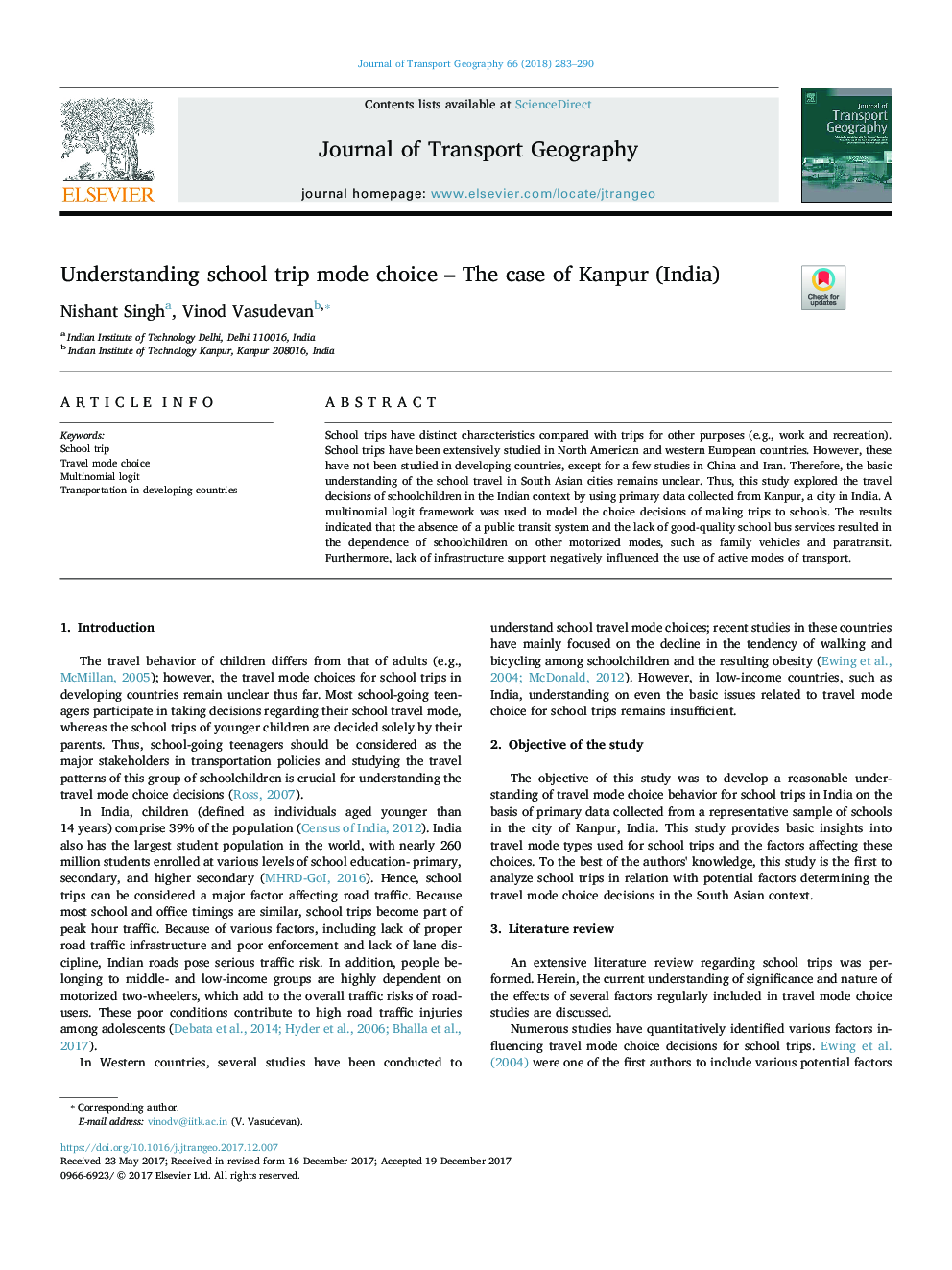| Article ID | Journal | Published Year | Pages | File Type |
|---|---|---|---|---|
| 7485227 | Journal of Transport Geography | 2018 | 8 Pages |
Abstract
School trips have distinct characteristics compared with trips for other purposes (e.g., work and recreation). School trips have been extensively studied in North American and western European countries. However, these have not been studied in developing countries, except for a few studies in China and Iran. Therefore, the basic understanding of the school travel in South Asian cities remains unclear. Thus, this study explored the travel decisions of schoolchildren in the Indian context by using primary data collected from Kanpur, a city in India. A multinomial logit framework was used to model the choice decisions of making trips to schools. The results indicated that the absence of a public transit system and the lack of good-quality school bus services resulted in the dependence of schoolchildren on other motorized modes, such as family vehicles and paratransit. Furthermore, lack of infrastructure support negatively influenced the use of active modes of transport.
Keywords
Related Topics
Life Sciences
Environmental Science
Environmental Science (General)
Authors
Nishant Singh, Vinod Vasudevan,
